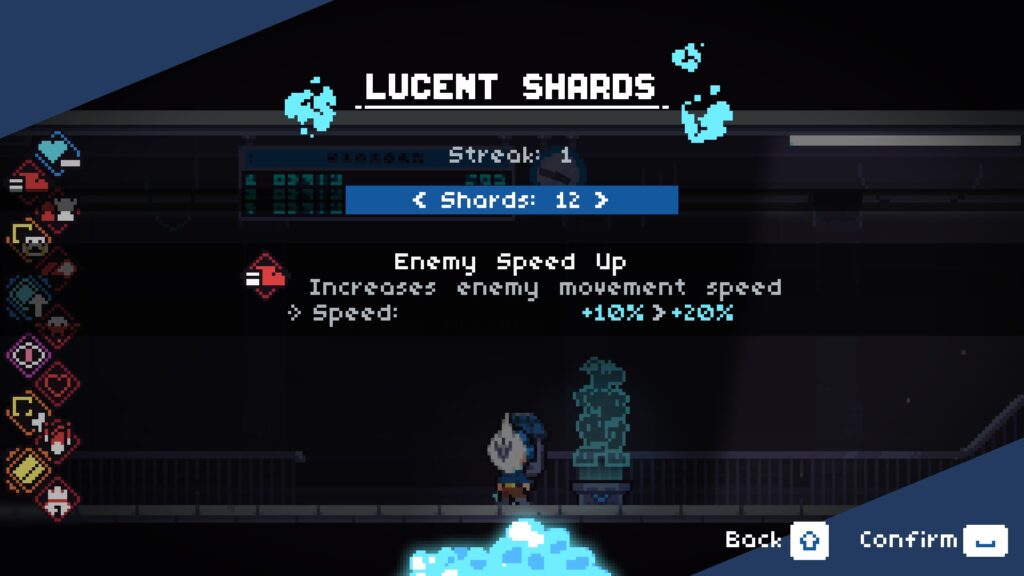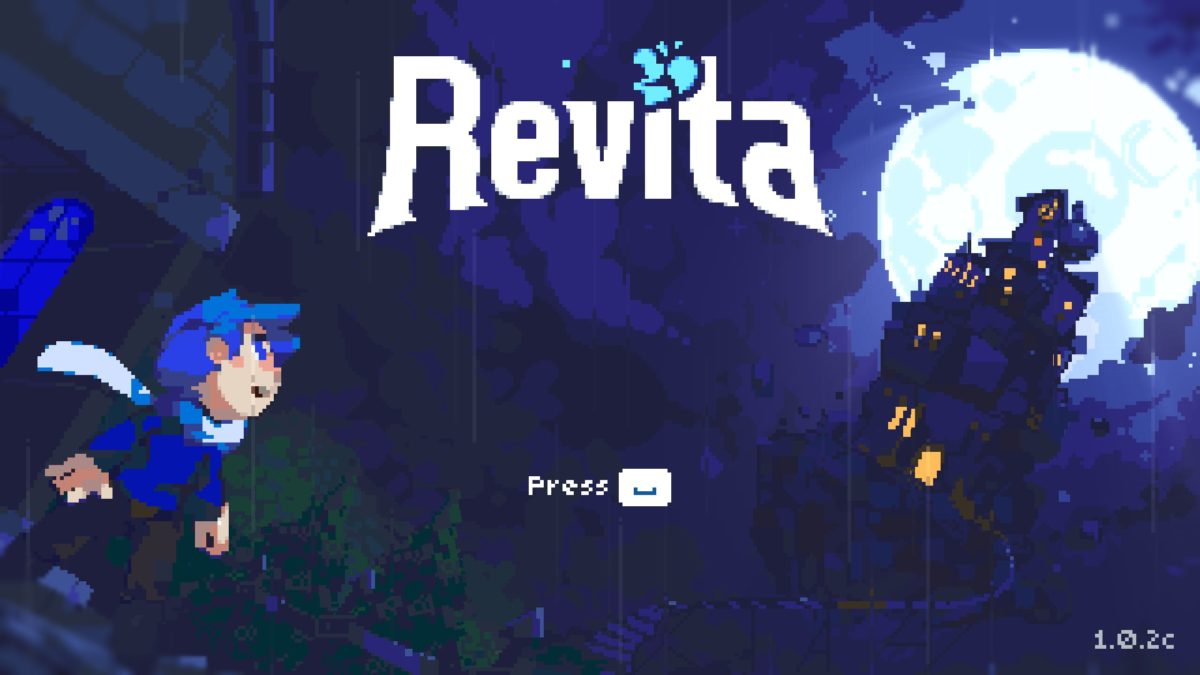Revita is another action roguelike to come out of early access recently. And while it does feel like a greatest hits collection of action roguelike mechanics, the game’s principal twist does separate it from the pack but does so in a polarizing way.
Rebirth
The story of the game follows a young boy who keeps waking up in a mysterious tower that he is forced to climb. Standing in his way are various monsters and creatures that represent the stages of grief, hinting at some earth-shattering secrets going on. The basic gameplay involves running, jumping, shooting, and dodging enemy attacks on procedurally generated floors. While the game features set room layouts, what enemies can spawn is entirely random per area/biome.
As with any action roguelike, you’re going to find a number of items that can change how your character behaves and do damage. The first twist of the game is that your health is also your currency. Shops, shrines, treasure chests, and other things will require you to sacrifice your health. As you kill enemies, you’ll accumulate souls that can be transformed into more health or give you more of a health pool.
The sheer number of unlockables is extensive, and I haven’t seen a pool like this since The Binding of Isaac. The different varieties of items can lead to crazy runs, but your skill is still going to be the main factor. As you play through the game, progressive difficulty unlocks will increase the difficulty of runs and add in new modifiers to deal with. Where the game goes with this is somewhat original for the action roguelike genre.
A Difficult Story
For most games, the progressive difficulty is simply there for expert players who are done with the story and just want to keep pushing up the challenge. With Revita, the difficulty is part of the story. Once you get to difficulty level 5, the game will challenge you to perform a specific task to move the story along and unlock even more difficulties and levels to play. This is like The Binding of Isaac which had its share of secrets and additional content. However, you cannot even get anything that would be considered a real ending without raising up the difficulty. the progressive difficulty provides a lot of replay value for people who want the challenge
the progressive difficulty provides a lot of replay value for people who want the challenge
For those that do manage this task, they will find even more difficulty levels, secrets, and harder challenges to go after. At the time of writing this review, the developer has changed the conditionals for the first set of challenges, which is good due to their difficulty and RNG messing with it. However, if you find that unlock to be difficult, the game has far more in store, and while this does leave the game with plenty under the surface to find, I don’t know how many people are going to be motivated this way.
Pushing Through the Pain
Revita reminds me a little bit of Spelunky 2 and how there is more going on for expert players than there is for casual/core ones. While it does feel nice to know that there is a lot more to this game for someone like me, I do question if there’s enough to motivate someone to make the trek up the difficulty ladder.
The problem is that unlocking the many secrets to Revita is not just about getting good at the game, but also figuring out the conditions for its secrets and being able to execute it with randomly chosen items showing up each run. The base game, or level 0 of difficulty, is on the easy side compared to other games in the genre. If someone plays, beats the game and thinks that is it, they’re going to leave disappointed.
Even with the number of difficulty settings that you can unlock, and there are plenty, the base path through doesn’t feel like there is enough variance in the same ways as Hades or The Binding of Isaac. As with Hades, your starting weapon dictates a lot about how you’re going to be playing over the run. However, where Hades has the different god buffs, or The Binding of Isaac has items that radically change your build, Revita doesn’t have that many that would be considered that run-affecting. In total, there are five main biomes, and two variants of two of them that you will do per run. I’ve found that I was relying on the same basic strategies each run and that they were working.
From an expert standpoint, trying to get through challenges hitless can be frustrating as screen shaking, the camera zooms, and the bullet physics themselves can make it hard to gauge dodging. The bullet physics in the game varies from linear directions to those that have their own simulated physics to them. There were times due to the rng of how bullets behaved that there didn’t seem to be a safe way to dodge them.
One of the more annoying aspects of Revita’s progressive difficulty is that several levels introduce elements that increase the duration of the runs. By the time I was hitting level 10+, a single run would take about an hour, with the combination of the lack of variance, started to wear thin for me. I think I would have preferred fewer difficulty settings but make their differences more pronounced. Some, like increased bullet spawn and enemy speed were a big deal, but it took until shard 14 before I started to see more interesting ones that affected things.
Continuing the Cycle
Revita has a lot of charm to it, and the game makes use of a variety of action roguelike mechanics and systems. If you’re hoping for an example that radically changes the formula in the same way as Hades did, then this game doesn’t go that far. If you’re a veteran of the genre looking for another challenge to dive, or climb, into, then this is a solid entry for the year.
This was played with a press key provided by the developer.
If you enjoyed this story, consider joining the Game-Wisdom Discord channel. It’s open to everyone.

Owner of Game Wisdom with more than a decade of experience writing and talking about game design and the industry. I’m also the author of the “Game Design Deep Dive” series and “20 Essential Games to Study”

